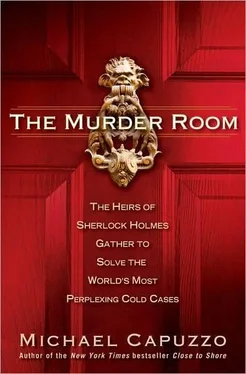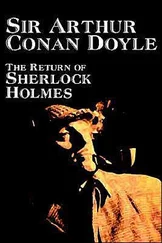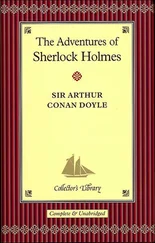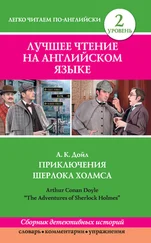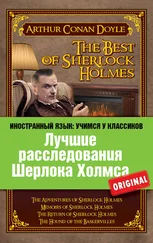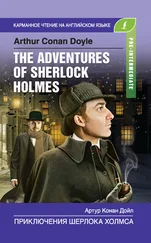Yet Ressler surprisingly came away from his meeting with the killer feeling “only empathy for the tormented and twisted person who sat before me” who said he killed and ate his visitors to overcome loneliness. Dahmer was insane, Ressler said, and deserved life in a mental hospital, not his prison sentence of nearly a thousand years. He testified in Dahmer’s defense.
Walter was horrified by his friend’s view. Walter insisted that Dahmer was a sane, cold psychopath who must be held accountable. In all but a very few criminal cases, Walter said, “People make choices. If you deny them that ability, you take away their humanity and that of everyone around them, including the victim.”
Ressler had grown up in the same Chicago neighborhood as John Wayne Gacy. When Ressler refused to attend the serial killer’s execution, Gacy cursed him, saying he would haunt the FBI agent from the grave. Though Walter was skeptical of Ressler’s account, there were few people not moved by Ressler’s story that he had fallen asleep in a hotel room in Houston when he was awakened by an immensely powerful unseen force that was holding him down so he couldn’t move or breathe. As he broke free with a desperate strength, he heard the TV on in the background-CNN reporting that John Wayne Gacy had just been executed.
“How does one avoid becoming the victim of a serial killer?” Fleisher asked in a rave review of the book in the Vidocq Society Journal, now published quarterly. “The conclusion I drew from Ressler’s book is not to talk to, or get into a car, with strangers, to stay away from ‘gay’ S amp;M bars, and not to join a cult. Follow those rules and you can reduce your risk of being murdered by a monster to near zero. Simplistic? Maybe, but it couldn’t hurt and it has worked so far for me.”
Fleisher was proudest of Vidocq Society Members’ work on major murder cases. Renowned forensic dentist and VSM Haskell Askin made headlines by providing the crucial testimony that led to the conviction of repeat violent sexual predator Jesse Timmendequas in the brutal sex murder of seven-year-old Megan Kanka in Hamilton, New Jersey, on July 29, 1994. Kanka’s death inspired the creation of Megan’s Law, a varied network of community laws requiring police to provide information about neighborhood sexual predators. In testimony on May 17, 1997, Askin matched bite marks on the defendant’s palm to the young girl’s teeth, evidence that so excited one juror he “punched the air with his fist and loudly clicked his tongue,” a reporter said. The juror was relieved of his duty, but Timmendequas was convicted and sentenced to death.
VSM Barbara Cohan-Saavedra, an assistant U.S. attorney, successfully prosecuted Soviet spy Robert Lipka, a U.S. National Security Agency employee in the 1960s who pled guilty to photographing top-secret documents with miniature cameras and stuffing others in his pants and under his hat to sell to KGB agents for $27,000. Lipka was sentenced to eighteen years in jail.
The multitalented Cohan-Saavedra, a jewelry artist and pastry chef, helped persuade Fleisher to add another annual dinner celebration to the Vidocq Society calendar-July 14, Bastille Day. Fleisher thought it a splendid idea. “Vidocq’s spirit of redemption lives in the Vidocq Society,” he said. “How better than to celebrate that famous day in 1789 when the Bastille was stormed and the prison doors thrown open.”
Fleisher had recently helped exonerate a man falsely accused of murder in Little Rock, Arkansas. After Fleisher appeared on 48 Hours, he received a remarkable phone call from Little Rock schoolteacher Teresa Cox Baus, whose brother, restaurant manager William Cox, had been murdered in March 1991. Baus wanted the Vidocq Society to help exonerate a black dishwasher she believed was falsely accused of killing her brother. The schoolteacher had stopped working for the prosecution of her brother’s alleged murderer-and was now helping the public defender. “I can’t stand to see an innocent person convicted,” she said. “I grew up in Little Rock, and I don’t want to say this, but they’re charging a black guy with a white guy’s murder, and it’s very hard for them to see it any other way.”
Fleisher asked two renowned VSM profilers to examine the case file-Walter and FBI special agent Gregg McCrary, who had handled many major cases, including the Sri Lankan massacre of thirty-three Buddhist monks in 1987. After the profilers confirmed Fleisher’s suspicions of the dishwasher’s innocence, the lawyers for the accused won an acquittal in forty-five minutes. “Teresa Baus is an American hero,” Fleisher said. “That’s how justice is supposed to work.”
But the Vidocq Society’s greatest victory in a springtime of good news was its least known.
On Friday, May 16, as Haskell Askin prepared to testify in the Megan Kanka trial in New Jersey, Richard Walter sat in the Lubbock County Courthouse in Lubbock, Texas, anxiously waiting with Jim and Barbara Dunn, waiting for justice to be served, at last, to Alicia “Leisha” Hamilton for the torture-murder of Scott Dunn. Minutes earlier, a cheer had erupted from the jury room and spilled through the thrown-open door and down the hallway; deadlocked for four hours, the jurors had reached a decision.
Hamilton stood erect and proud in the center of the courtroom, wearing a conservative blue dress that complemented her long, dark hair. Judge William R. Shaver, his square jaw and silver hair set off smartly by his black robes, had asked her to stand to receive the verdict. Now the judge frowned as loud murmurs raced through the overflow crowd.
Hamilton appeared confident and at ease as she had been throughout the four-day trial. That morning she had laughed and joked with her parents and attorney, and tossed a big smile at the jurors, especially the handsome young man she’d been hitting on with her big green eyes for four days. According to testimony, she had told an ex-lover, “There’s no way I can be convicted because there’s not a body and there’s not a weapon.”
Judge Shaver pounded his gavel for quiet. “I don’t want any of the spectators to forget that this is a court of law,” he said sternly. “I want absolute silence in the courtroom.” The courtroom fell hushed in the dull light of late afternoon slanting through tall drapes.
Richard Walter, in his crisp blue suit, leaned forward in anticipation. Jim Dunn wore his best dark suit and tie, with a pocket handkerchief that was more than decorative. Barbara wore a lovely matching dress, and clutched Jim’s hand. It was almost six years to the day since Roger “Scott” Dunn had been last seen walking with Hamilton into their apartment and was never seen again. Walter believed in the notion of proper revenge, which had fallen out of favor but the Greeks knew was essential to a civilized life. This was their chance. Their long wrestling with angels and demons had distilled to a moment.
At the state’s table, Rusty Ladd, the lanky assistant district attorney in cowboy boots, nervously leaned forward. The case had been a prosecutor’s nightmare, with the years of delays allowing memories and evidence to go cold. The first grand jury hadn’t found sufficient evidence to indict; the district attorney who brought the case was bounced out in an election; the new DA had a conflict of interest-his old law partner had once represented Hamilton ’s alleged collaborator Tim Smith. So the DA reached out to Ladd in another county to be special prosecutor. A new grand jury labored over the case, and Ladd wrestled for eight months to get it to trial with its epic limitations: For one of the few times, if not the first time, in history he believed the state was asking a Texas jury to convict for murder without a body or weapon. It had been a daunting challenge to meet the most basic standard that a crime had been committed, to prove corpus delicti (“body of the crime”). In an arson case corpus delicti usually meant producing a burned building; in a murder case, producing the body. The jury needed to accept the psychological nuances of Hamilton’s Machiavellian revenge-and in a terrible blow to Ladd’s case, Walter, the profiler who could explain Hamilton’s psychopathic charm and murderous rage, had been unable to testify. Judge Shaver ruled that a “profile” of an accused murderer was speculative and not worthy of his court.
Читать дальше
